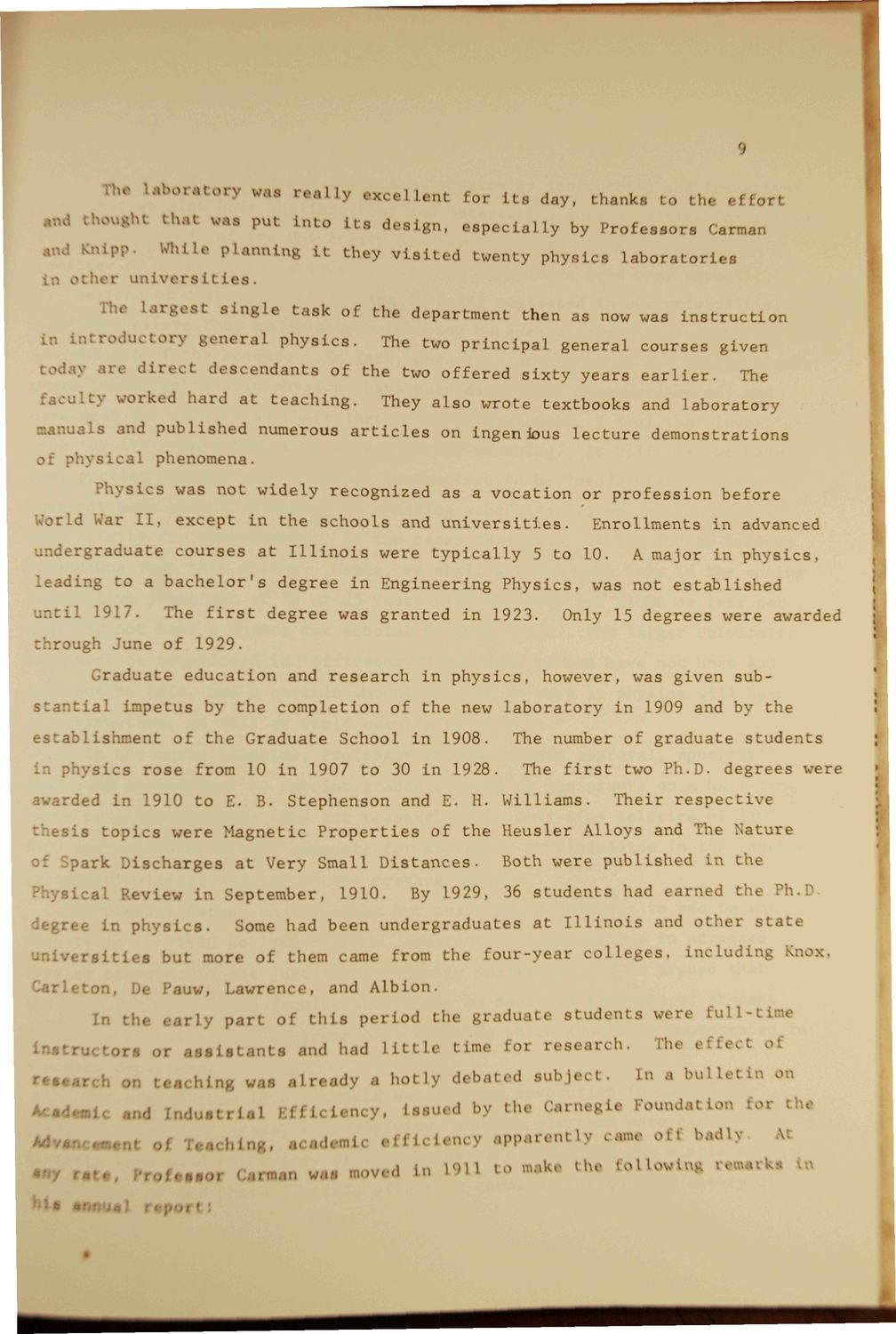Caption: Book - Century of Physics (1973)
This is a reduced-resolution page image for fast online browsing.

EXTRACTED TEXT FROM PAGE:
9 rhc laboratory was really excellent for its day, thanks to the effort a a ght that was put into its design, especially by Professors Carman |K pp. While planning it they visited twenty physics laboratories t univers it i es. The largest single task of the department then as now was instruction in Ot in tntrc tory general physics. The two principal general courses given The today are direct descendants of the two offered sixty years earlier. faculty worked hard at teaching. They also wrote textbooks and laboratory manuals and published numerous articles on ingenious lecture demonstrations of physi il phenomena. Physics was not widely recognized as a vocation or profession before World War II, except in the schools and universities. Enrollments in advanced A major in physics, undergraduate courses at Illinois were typically 5 to 10. leading to a bachelor's degree in Engineering Physics, was not established until 1917. The first degree was granted in 1923. Only 15 degrees were awarded through June of 1929. Graduate education and research in physics, however, was given sub• Btantial impetus by the completion of the new laboratory in 1909 and by the establishment of the Graduate School in 1908. physics rose from 10 in 1907 to 30 in 1928. The number of graduate students The first two Ph.D. degrees were Their respective ! i I a :rded in 1910 to E. B. Stephenson and E. H. Williams. f ei s topics were Magnetic Properties of the Heusler Alloys and The Nature o: Spark Discharges at Very Small Distances. F sical Review in September, 1910. Both were published in the By 1929, 36 students had earned the Ph.D. degree in physics. Some had been undergraduates at Illinois and other state universities but more of them came from the four-year colleges, including Kn.-x. Carl :on, De Pauw, Lawrence, and Albion. In the early part of this period the graduate students were full-time instructors or assistants and had little time for research. The c act oJ esearch on teaching was already a hotly debated subject, Academic s - I 1 m eat 0i m a bullet on U itrUI Efficiency, issued by the Carnegie Foundation Eor the etching, academic efficiency apparently came oft badlj ..or irtnan was *ovrcl in MM I . make t h e to 1 loving remark,
|